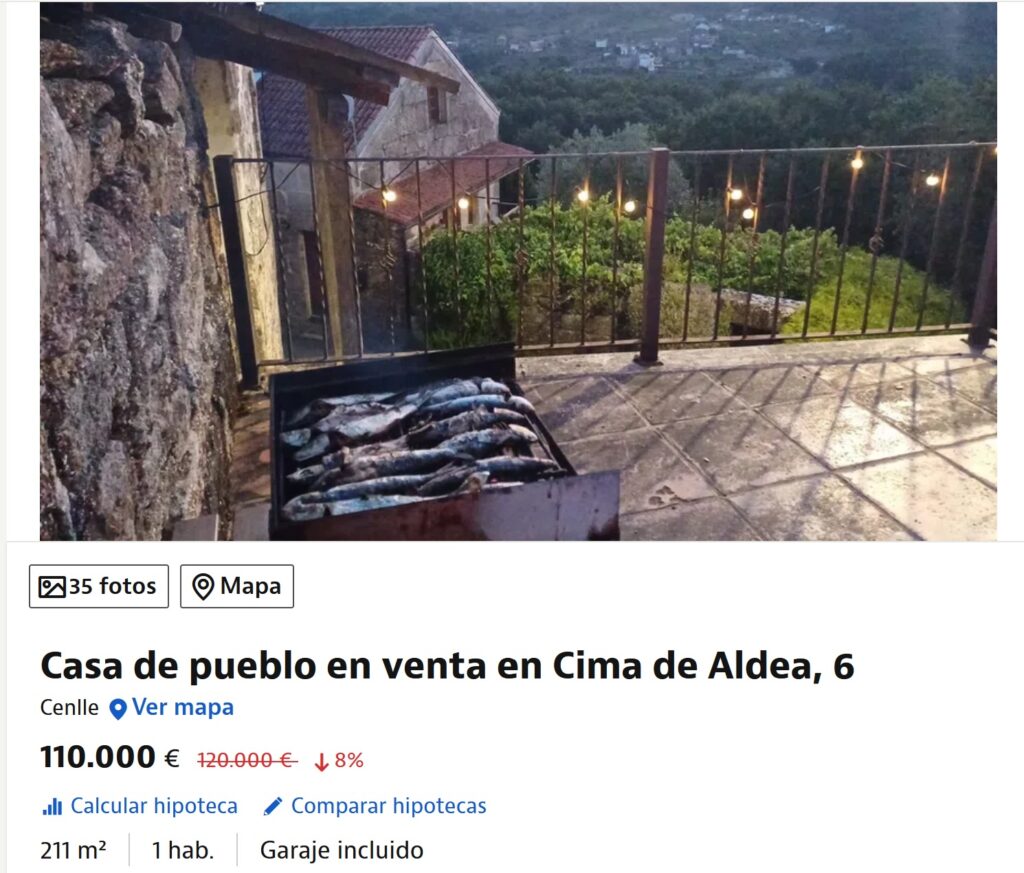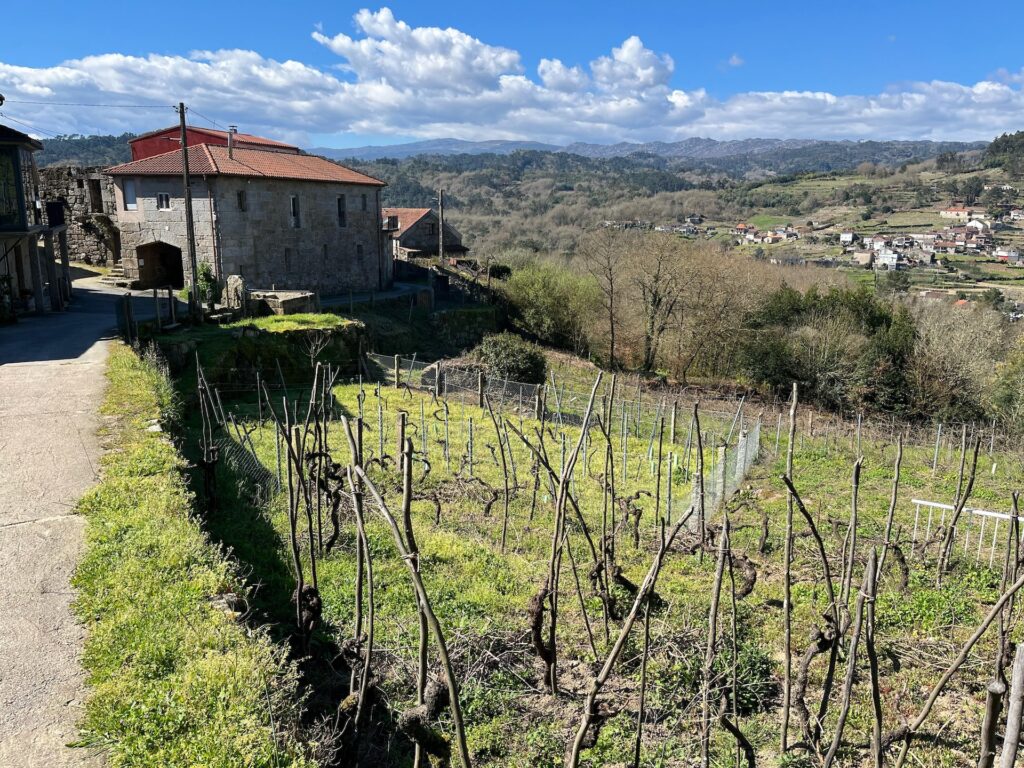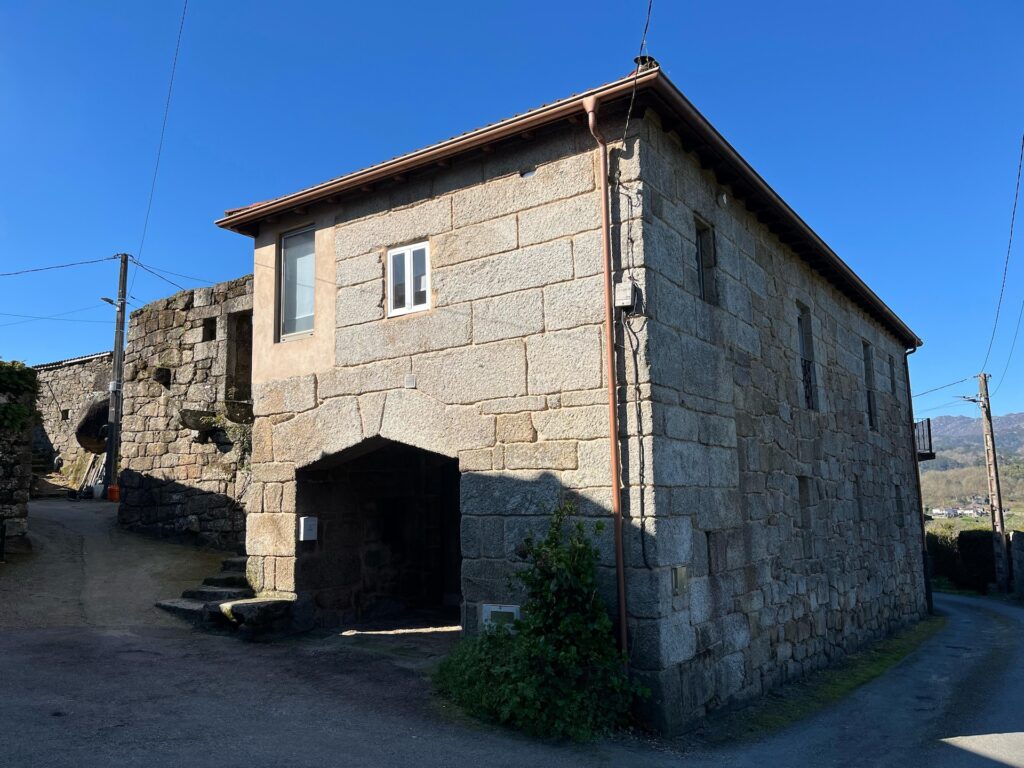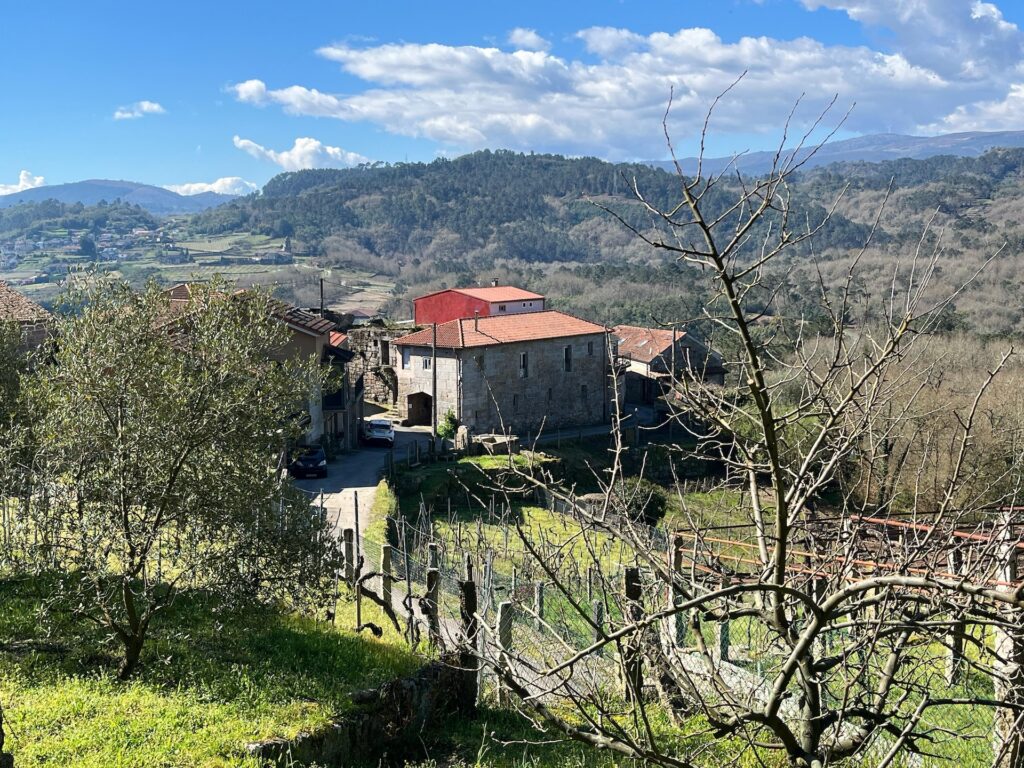Hi there,
Here are the previous posts about this story:
As I told you in the previous article, in the search for our vacation home, we came across a property in a picturesque village in Ourense called Cenlle. This house, which was priced at 110,000 euros, pleasantly surprised us with its potential.

Although it presented some points for improvement such as doors and windows, the house had a charm of its own. The quality of the stone structure, the roof, the thermal and sound insulation were almost unbeatable. In fact, it was the only house we had visited where we weren’t cold.
It was practically new as the owners had bought it 9 months ago and were selling it because they were separating.
What we also loved about the property was the fact that it came with a ruin attached, which offered us the possibility of renovating it and turning it into a second home. In addition, the sale included three lots, which provided ample room for future projects.
The day after our visit, the property was no longer available on Idealista. When we asked the owner, he informed us that he had it reserved. This was a real shock, because we had quite liked the house and saw its potential. However, the owner added that, he was still listening to offers, which gave us a little hope.
We continued our search and told him that if we did not find anything that convinced us, we would contact him again. On February 15 we visited four houses and all of them were a real disappointment.
After some more thought, we decided to offer him 100,000 euros. However, the owner replied that the least he could accept was 107,000 euros, a small difference, but significant for us at the time.
We decided to accept his offer, since, although the house had some points that could be improved, overall, it seemed to us to be a pretty good option. We knew that it was going to require some renovations, such as changing windows, doors and some other details, but considering the general condition of the house and the opportunity it represented, we saw it as a worthwhile investment.
Besides, after having already visited more than 30 houses in this search process, the price seemed reasonable compared to what we had found so far. The quality of the house, added to the possibility of taking advantage of the ruin for future renovations, made us make the decision to move forward with the purchase.
Starting in mid-February, we began to ask the owner of the house for all the necessary documentation to make sure that there were no problems with the property, that there were no illegalities or debts, and that everything was in order.
This precaution arose from our experience in Porto, when we were scammed into buying a house that we later discovered was in an illegal situation. Although we had never had to go through these procedures when buying property in Spain, where this type of situation is unthinkable, we wanted to make sure we did not repeat the same mistake.
Also, since there was no real estate company involved in the sale, the responsibility of verifying all aspects of the house fell on us.
So, Diego contacted a lawyer friend of his and sent him all the documentation of the house, the ruin and the three lots so that he could review everything and confirm that there was nothing irregular.
Fortunately, the lawyer gave us a clean bill of health for all the documentation, although he recommended that, as an additional measure, we check with the town hall to verify that there were no future urban or development plans, such as the construction of a road or any other works that could affect the land.
Diego also contacted the town hall to ask if the house and related properties had any debts or problems. We were informed that there was a small debt, less than six euros, which had not even been issued as a receipt, which gave us peace of mind in that regard.
As if that were not enough, Diego contacted the notary who had previously formalized the purchase to ask what documents we needed to complete the sale. Since the owner had a mortgage, he explained that, although we did not need financing, it would be necessary to retain an amount at the time of the sale in order to pay the procedure of the cancellation. He also asked us to have the owner provide the last six IBI receipts to ensure that there were no additional debts.
After talking to the notary, contacting the town hall, receiving confirmation from the lawyer and making sure that, in general, the purchase of the house was safe, we finally started to feel more at ease with the decision we were making.
With all this information in hand, we informed the owner of the house that, if during the first week of March we were able to clarify the outstanding points, we would like to sign the reservation contract on Saturday, March 8. Thereafter, we would make an appointment with the notary for the actual purchase of the house.
As the earnest money contract had some things to be modified, in the end the sellers moved the date to March 15.
That day we visited again, this time verifying the functioning of everything and taking photos of the furniture and appliances that remained in the property. We then signed the earnest money contract and that night we made the transfer of the 5,000-euro reservation fee.


As we wanted to do the deed on April 11, that same Monday we contacted a couple of notary’s offices to check availability.
Initially we had thought of doing the deed at the same notary office where the sellers had done the deed, but since the second time we called they were a bit rude and they had no availability in April, we decided to look at other options.
In the next post I will tell you how the process went after the purchase and the procedures we had to do afterwards.
More articles on searching for and buying our second home:

